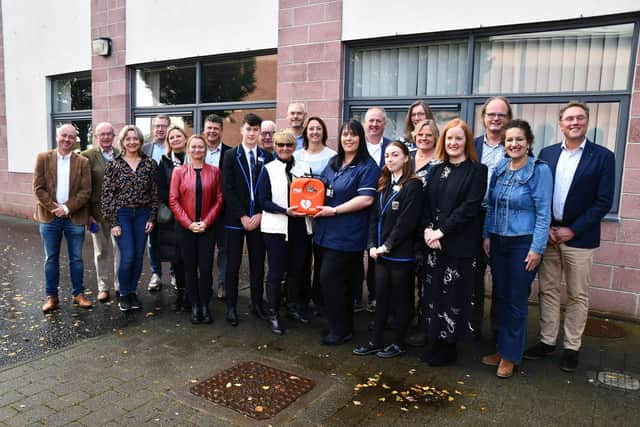Rotary Club of Falkirk present defibrillators to schools
and live on Freeview channel 276
Members of both clubs worked together to arrange to have all schools across Falkirk Council area fitted with defibrillators which can be used if someone is having a cardiac arrest.
Graeme High School had initially got in touch with the Falkirk club asking for assistance after the school’s medical assistant Suzanne McCarron came up with the idea.
Advertisement
Hide AdAdvertisement
Hide AdRotary spokesperson Sandy McGill said: “Coincidentally around the same time we had an approach from Aperldoorn ‘t Loo Rotary Club in the Netherlands asking if there was an education based project that we might collaborate with. We thought that assisting only one school wouldn't be proper so we investigated the situation to discover that some of the high schools were well equipped and others not at all.


"We set out to ensure that all schools in our area had at least two defibrillators, one accessible by the public and one in the sports area of the school.”
A delegation from Apeldoorn 't Loo visited Falkirk earlier this month and handed over defibrillators at Graeme and St Mungo’s High Schools.
Eventually the project, overseen by the Rotary Clubs, along with St John Scotland and school pupils will see two defibrillators presented to Graeme and St Mungo’s, and one to Braes, Denny and Falkirk High Schools.
Advertisement
Hide AdAdvertisement
Hide AdDefibrillators have the potential to save the lives of pupils, staff and visitors in schools, with latest research showing that accessing these devices within three to five minutes of a cardiac arrest increases the chance of survival by over 40 per cent.